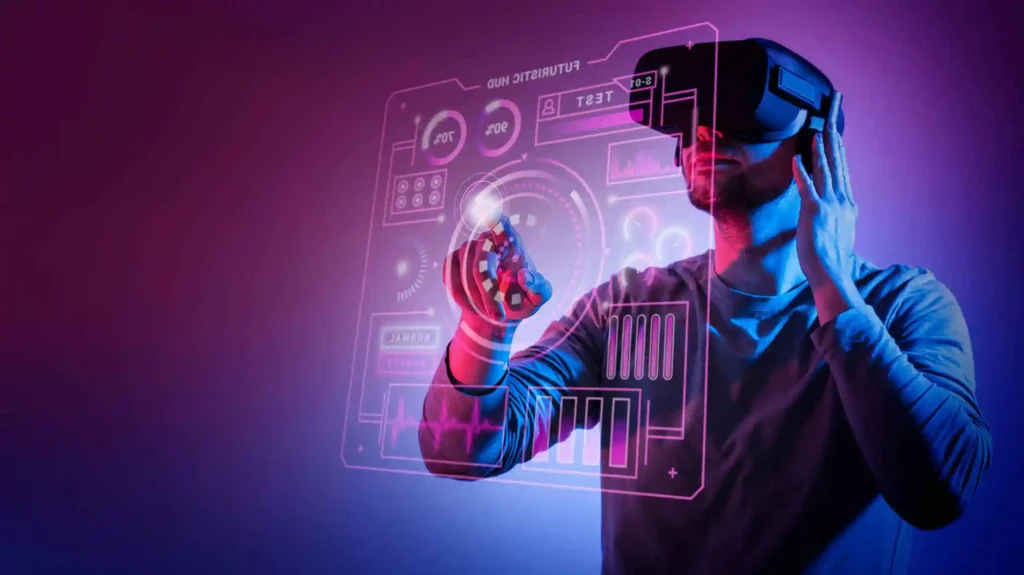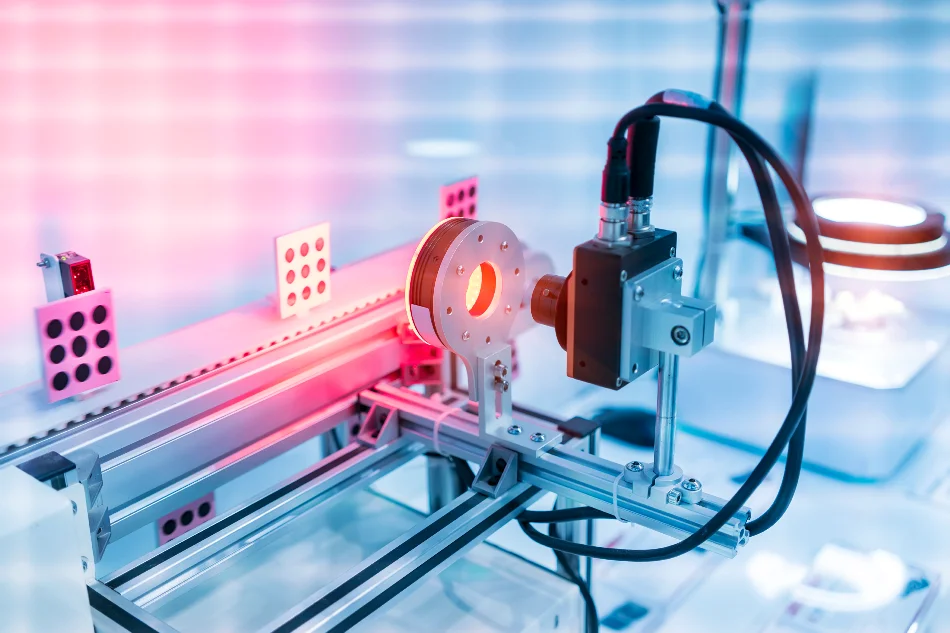Introduction
In today’s fast-paced world, maintaining high product quality is crucial for businesses across various industries. One of the most significant advancements in ensuring product excellence is the adoption of AI-based vision inspection software. This cutting-edge technology leverages artificial intelligence to automate and enhance the inspection process, ensuring that products meet stringent quality standards. But what exactly is AI-based vision inspection software, and how does it revolutionize product quality? Let’s dive in.
What is AI-Based Vision Inspection Software?
AI-based vision inspection software combines machine learning and computer vision to analyze and interpret visual data from production lines. This technology uses cameras and sensors to capture images of products, which are then processed by AI algorithms to detect defects, inconsistencies, and other quality issues. The system can perform inspections with incredible accuracy, speed, and consistency, far surpassing traditional manual methods.
The Evolution of Inspection Technology
Traditional Inspection Methods
In the past, product inspections were predominantly manual, relying on human inspectors to visually examine each item. While effective to some extent, this method was time-consuming, prone to human error, and often inconsistent.
Transition to Automated Systems
The introduction of automated inspection systems marked a significant improvement. These systems used basic image processing techniques to identify defects, offering more speed and reliability than manual inspections. However, they still lacked the sophistication needed to handle complex products and varied inspection criteria.
The Advent of AI in Inspection
The integration of AI into vision inspection systems has revolutionized the field. AI algorithms can learn from vast amounts of data, continuously improving their accuracy and ability to identify even the smallest defects. This leap in technology has made AI-based vision inspection software an indispensable tool for modern quality control.
How AI-Based Vision Inspection Works
Machine Learning and Computer Vision
At the core of AI-based vision inspection is machine learning, a branch of AI that enables systems to learn and improve from experience. Computer vision, another critical component, allows the system to interpret and analyze visual data. Together, these technologies enable the inspection software to identify defects with high precision.
Real-Time Image Processing
AI-based vision inspection systems process images in real time, capturing every detail of the products as they move along the production line. This capability ensures that any defects are detected immediately, allowing for quick corrective actions.
Data Analysis and Decision Making
Once the images are processed, the AI system analyzes the data to make informed decisions. It can classify defects, determine their severity, and even predict potential issues before they become significant problems. This proactive approach enhances overall product quality and reliability.
Benefits of AI-Based Vision Inspection Software
Improved Accuracy and Precision
One of the most notable benefits of AI-based vision inspection software is its unparalleled accuracy. By eliminating human error and leveraging advanced algorithms, these systems can detect even the most minor defects, ensuring that only top-quality products reach the market.
Enhanced Speed and Efficiency
AI-powered inspection systems operate at a much faster pace than manual methods. They can inspect thousands of items per minute, significantly boosting production efficiency without compromising on quality.
Cost-Effectiveness
While the initial investment in AI-based vision inspection software can be substantial, the long-term savings are considerable. Reduced labor costs, fewer product recalls, and minimized waste contribute to a more cost-effective operation.
Consistency and Reliability
Human inspectors can experience fatigue and inconsistencies, but AI systems provide consistent and reliable inspections around the clock. This reliability ensures that every product meets the same high standards, regardless of production volume.
Scalability
AI-based vision inspection systems can easily scale to accommodate growing production needs. Whether a company produces thousands or millions of items, the system can handle the increased workload without sacrificing accuracy or speed.
Industries Benefiting from AI-Based Vision Inspection
Manufacturing
In manufacturing, AI-based vision inspection is crucial for maintaining high quality across various products, from electronics to consumer goods. The technology ensures that every component meets specifications, reducing the risk of defects and enhancing overall product reliability.
Pharmaceuticals
The pharmaceutical industry demands stringent quality control due to the critical nature of its products. AI-based vision inspection software helps ensure that medications are free from defects, contamination, and incorrect labeling, safeguarding consumer health.
Food and Beverage
In the food and beverage industry, maintaining hygiene and quality is paramount. AI-powered inspection systems detect contaminants, packaging errors, and other issues, ensuring that products are safe and meet regulatory standards.
Automotive
Automotive manufacturers rely on AI-based vision inspection to maintain the highest quality standards for vehicle components. From engine parts to safety systems, this technology ensures that every piece functions correctly and safely.
Electronics
The electronics industry benefits from AI-based vision inspection by ensuring that intricate components, such as circuit boards and microchips, are free from defects. This precision is essential for the performance and longevity of electronic devices.
Impact on Product Quality
Reduction in Defects
By accurately identifying and eliminating defects during production, AI-based vision inspection significantly reduces the number of faulty products. This reduction in defects leads to higher overall product quality and reliability.
Enhanced Compliance with Standards
Industries often have strict quality standards and regulations to meet. AI-based vision inspection software helps companies comply with these standards by ensuring that every product meets the required criteria.
Customer Satisfaction
High product quality directly translates to customer satisfaction. When consumers receive reliable, defect-free products, their trust in the brand increases, leading to repeat business and positive word-of-mouth.
Challenges and Considerations
Implementation Costs
The initial cost of implementing AI-based vision inspection software can be high. However, the long-term benefits often outweigh these costs, making it a worthwhile investment.
Integration with Existing Systems
Integrating new technology with existing systems can be challenging. Companies need to ensure that their current infrastructure can support the AI-based inspection software without causing disruptions.
Training and Adaptation
Employees need to be trained to work with the new technology. This training can take time and resources but is essential for maximizing the benefits of AI-based vision inspection.
Future Trends in AI-Based Vision Inspection
Advancements in AI Technology
AI technology continues to advance rapidly, promising even more sophisticated and accurate vision inspection systems in the future. These advancements will further enhance the capabilities of quality control processes.
Increasing Adoption Across Industries
As the benefits of AI-based vision inspection become more apparent, more industries are expected to adopt this technology. This widespread adoption will drive further innovations and improvements.
Potential Developments
Future developments may include more advanced AI algorithms, improved integration capabilities, and enhanced user interfaces, making AI-based vision inspection even more effective and user-friendly.
Choosing the Right AI-Based Vision Inspection Software
Factors to Consider
When selecting AI-based vision inspection software, companies should consider factors such as accuracy, speed, scalability, and ease of integration with existing systems.
Vendor Selection
Choosing a reputable vendor with a proven track record is crucial. Companies should look for vendors that offer robust support and continuous updates to keep the software current.
Customization and Flexibility
The ability to customize the software to meet specific needs and adapt to changing requirements is essential. Flexible solutions that can grow with the company are ideal.
Implementation Strategies
Steps for Successful Implementation
Successful implementation involves careful planning, thorough testing, and gradual rollout. Companies should start with a pilot program to identify and address potential issues before full deployment.
Overcoming Common Obstacles
Common obstacles include resistance to change, technical challenges, and integration issues. Addressing these proactively through training, support, and clear communication can ensure a smoother implementation process.
Best Practices
Following best practices such as involving key stakeholders, setting clear goals, and maintaining open lines of communication can significantly enhance the chances of successful implementation.
Training and Support
Importance of Employee Training
Training employees to use AI-based vision inspection software is crucial. Well-trained staff can maximize the system’s potential and contribute to its success.
Continuous Support and Maintenance
Ongoing support and maintenance are vital for keeping the system running smoothly. Regular updates and troubleshooting can prevent issues and ensure optimal performance.
Resources Available
Many vendors offer extensive resources, including training programs, documentation, and customer support, to help companies get the most out of their AI-based vision inspection software.
The Role of AI in the Future of Quality Control
Long-Term Benefits
The long-term benefits of AI-based vision inspection include sustained improvements in product quality, increased efficiency, and reduced costs. These advantages will continue to drive the adoption of AI technology in quality control.
Evolution of Quality Control Processes
AI is set to revolutionize quality control processes further. As technology evolves, quality control will become more automated, accurate, and integrated with other production systems, leading to even higher standards of product quality.
Conclusion
AI-based vision inspection software is transforming the way industries approach quality control. With its ability to provide unparalleled accuracy, speed, and consistency, this technology is essential for any company committed to delivering top-quality products. By understanding its benefits and implementing it effectively, businesses can enhance their product quality, satisfy customers, and stay ahead of the competition.
Lastly, if you are looking for a reliable implementation partner, you may as well contact Trident Information Systems. Experience the power of Trident’s Visual Intelligence Systems firsthand. Don’t miss out on the incredible benefits they bring. Contact Trident today for a demo and see how these innovative solutions can transform your business. Also, stay updated by following our LinkedIn page for more insights. Join us as we lead the way in automotive innovation.
FAQs
What is AI-based vision inspection software? AI-based vision inspection software uses artificial intelligence and computer vision to automatically inspect products for defects and quality issues, providing highly accurate and consistent results.
How does AI improve inspection processes? AI improves inspection processes by leveraging machine learning algorithms to analyze visual data, detect defects with high precision, and process images in real time, leading to faster and more reliable inspections.
Which industries benefit most from AI-based vision inspection? Industries such as manufacturing, pharmaceuticals, food and beverage, automotive, and electronics benefit significantly from AI-based vision inspection due to the stringent quality standards and high volume of production.
What are the challenges of implementing AI-based vision inspection? Challenges include high initial costs, integration with existing systems, and the need for employee training and adaptation to the new technology.
What does the future hold for AI in quality control? The future of AI in quality control includes advancements in AI technology, increased adoption across industries, and the evolution of more sophisticated and user-friendly inspection systems.


